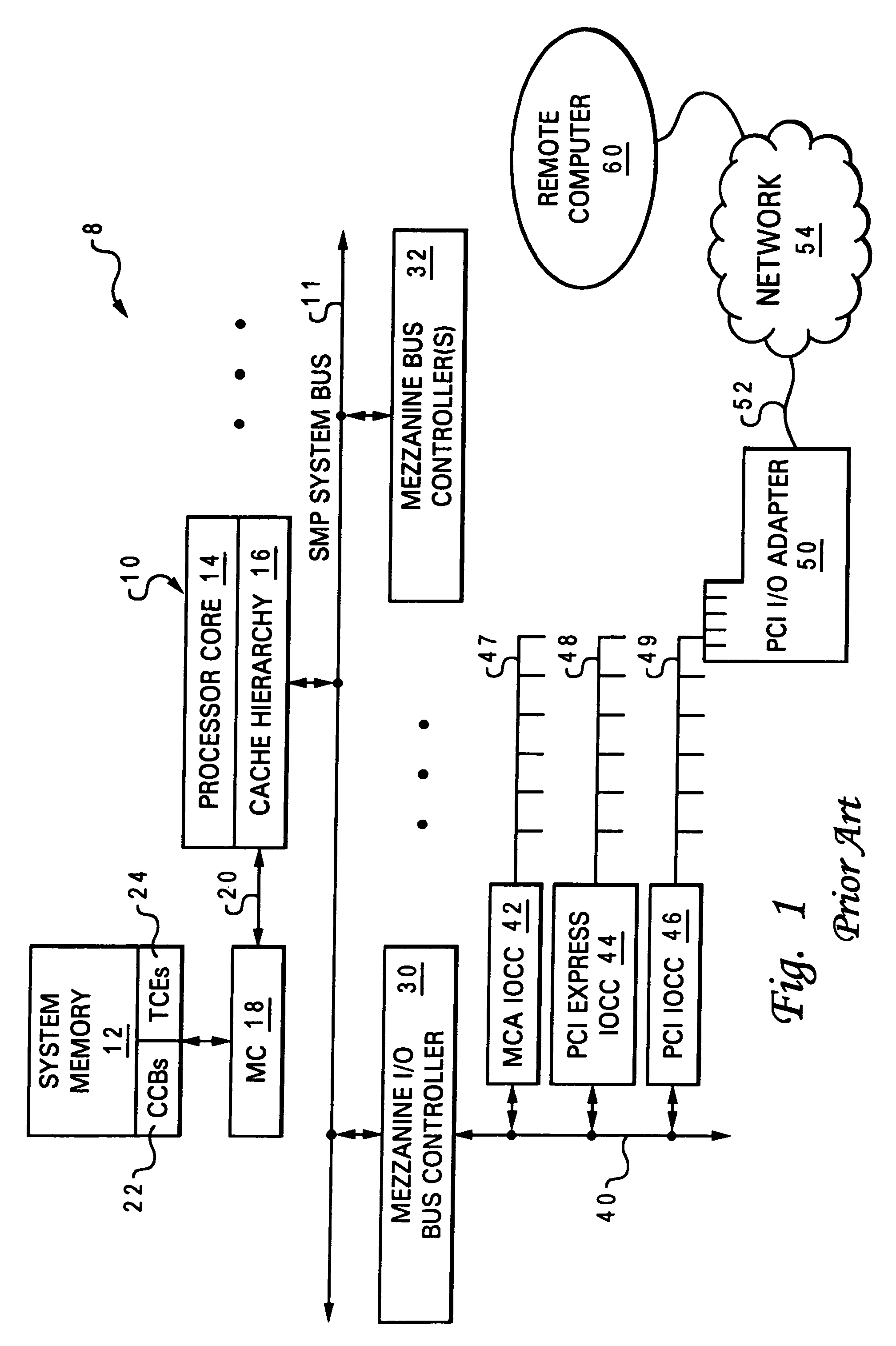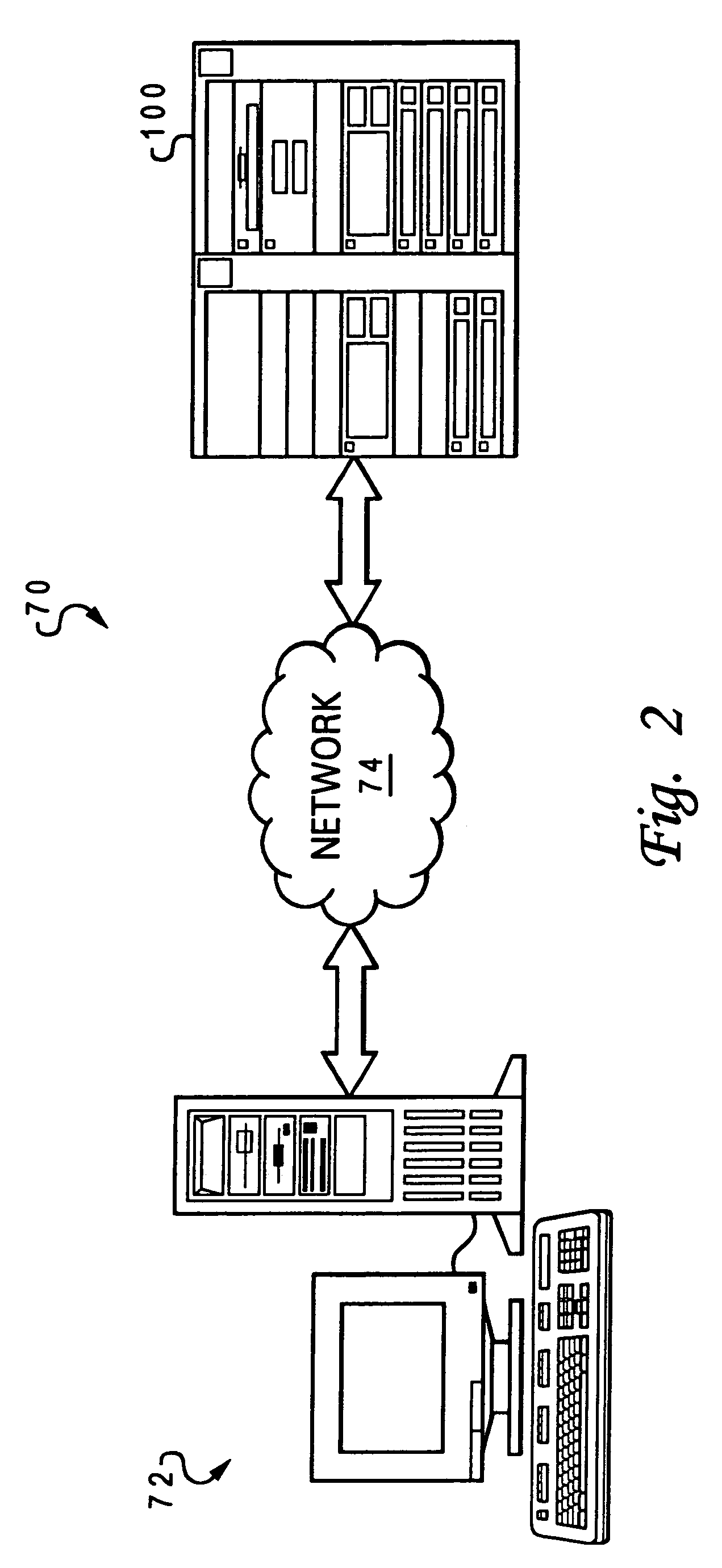Acceleration of input/output (I/O) communication through improved address translation
a technology of address translation and input/output communication, applied in the field of data processing, can solve the problems of increasing operating system performance, adding latency to each i/o data transfer, further latency, etc., and achieves the effect of consuming bandwidth, and reducing operating system performan
- Summary
- Abstract
- Description
- Claims
- Application Information
AI Technical Summary
Benefits of technology
Problems solved by technology
Method used
Image
Examples
Embodiment Construction
[0036]With reference again to the figures and in particular with reference to FIG. 2, there is illustrated an exemplary network system 70 in which the present invention may advantageously be utilized. As illustrated, network system 70 includes at least two computer systems (i.e., workstation computer system 72 and server computer system 100) coupled for data communication by a network 74. Network 74 may comprise one or more wired, wireless, or optical Local Area Networks (e.g., a corporate intranet) or Wide Area Networks (e.g., the Internet) that employ any number of communication protocols. Further, network 74 may include either or both packet-switched and circuit-switched subnetworks. As discussed in detail below, in accordance with the present invention, data may be transferred by or between workstation 72 and server 100 via network 74 utilizing innovative methods, systems, and apparatus for input / output (I / O) data communication.
[0037]Referring now to FIG. 3, there is depicted an...
PUM
 Login to View More
Login to View More Abstract
Description
Claims
Application Information
 Login to View More
Login to View More - R&D
- Intellectual Property
- Life Sciences
- Materials
- Tech Scout
- Unparalleled Data Quality
- Higher Quality Content
- 60% Fewer Hallucinations
Browse by: Latest US Patents, China's latest patents, Technical Efficacy Thesaurus, Application Domain, Technology Topic, Popular Technical Reports.
© 2025 PatSnap. All rights reserved.Legal|Privacy policy|Modern Slavery Act Transparency Statement|Sitemap|About US| Contact US: help@patsnap.com



